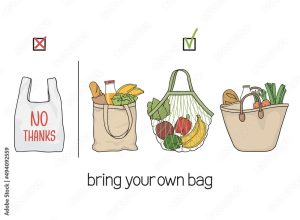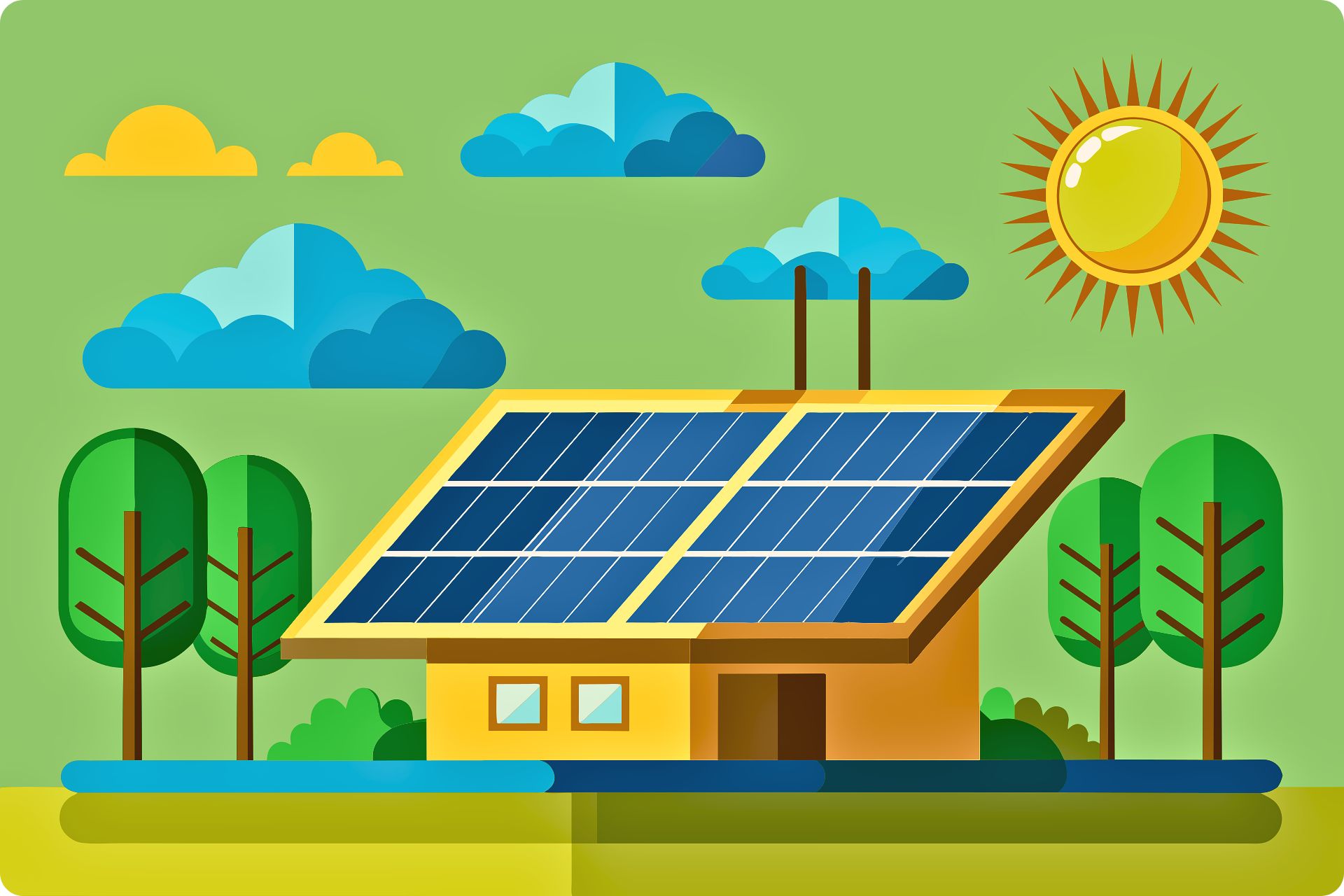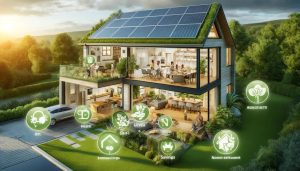Sustainable Living: Creating an Eco-Friendly Home in 2025 🌍
What Is Sustainable Living and Why It Matters in 2025
Creating an eco-friendly home is one of the most powerful ways to embrace sustainable living in 2025. With growing concerns about climate change, pollution, and rising energy costs, many Americans are looking for practical ways to reduce their carbon footprint while saving money and improving quality of life. From energy-efficient upgrades to zero-waste habits, building a greener lifestyle starts at home.
The Environmental, Social, and Economic Benefits of Sustainable Living
Sustainable living isn’t just good for the planet—it enhances well-being, strengthens communities, and drives economic progress. By conserving resources and supporting ethical supply chains, you can:
-
Lower your utility bills
-
Improve indoor and outdoor air quality
-
Promote social equity
-
Encou
-
rage community-level sustainability
This aligns with environmentally friendly home solutions and builds a pathway to a circular economy—one that generates less waste, creates green jobs, and supports a healthier future for all.
Eco-Friendly Home: Transform Your Living Space Sustainably
You don’t need to start big—small steps toward an environmentally friendly home can lead to lasting impact:
-
Install energy-efficient lighting (LED bulbs)
-
Use smart thermostats
-
Upgrade to energy-saving products for home
-
Improve insulation with draught excluders and triple-glazed windows
These align with the U.S. Department of Energy’s green building guidelines, promoting eco-conscious renovations.
Powering Your Eco-Friendly Home with Renewable Energy
Harness renewable energy for homes to cut costs and carbon emissions:
-
Solar panels and solar thermal systems
-
Solar battery storage
-
Heat pumps and smart meters
Federal incentives like the Solar Investment Tax Credit help reduce the financial burden while reducing fossil fuel use.
Water and Energy Saving Tips for a More Eco-Friendly Home
Small lifestyle changes yield massive savings:
-
Fix leaks and use low-flow showerheads
-
Set thermostats wisely for seasonal efficiency
-
Install radiator foil, use loft insulation
-
Unplug electronics when not in use
-
Upgrade to eco-friendly product alternatives for water and energy conservation
Waste Reduction Tips for a Sustainable and Eco-Friendly Home
Living sustainably also means rethinking waste:
-
Practice reduce, reuse, recycle
-
Compost food scraps
-
Buy in bulk to reduce packaging
-
Recycle electronics, glass, and paper
-
Choose brands with green certification programs like Green Key or Cradle to Cradle
Eco-Friendly Cleaning Products and Sustainable Household Items
Avoid harmful chemicals and reduce plastic use:
-
Use plant-based cleaners
-
Refillable spray bottles
-
Natural alternatives like vinegar and baking soda
-
Look for EPA Safer Choice and ECOLOGO labels when shopping for eco-friendly product alternatives
Create a Sustainable Kitchen for an Eco-Friendly Lifestyle
Transform your kitchen with smart and eco-friendly habits:
-
Compost food waste
-
Use beeswax wraps and zero-waste tools
-
Buy local produce
-
Portion meals to reduce food waste
-
Choose energy-saving kitchen appliances
The Impact of Food Choices on the Environment
Want to reduce your carbon footprint? Start with your plate:
-
Eat less red meat
-
Embrace a plant-based diet
-
Choose sustainable food suppliers
-
Support food waste composting
-
Promote a low-carbon lifestyle through conscious eating

Sustainable Fashion: Rethinking What We Wear
The fashion industry creates enormous waste. Adopt sustainable fashion practices by:
-
Buying second-hand or vintage
-
Avoiding fast fashion
-
Donating instead of trashing clothing
-
Washing less to reduce microplastic pollution
-
Embracing eco-friendly laundry practices
Green Travel: Sustainable Commuting and Tourism
Travel smarter with eco-friendly transport and tourism practices:
-
Use public transit or carpool
-
Drive an electric or hybrid vehicle
-
Choose sustainable tourism examples like eco-lodges and local homestays
-
Visit Sustainable Travel International for planning eco-trips
-
Reduce emissions from travel by avoiding unnecessary flights
Carbon Footprint: How to Measure and Reduce Yours
Understand your environmental impact with tools like the EPA Carbon Footprint Calculator. Reduce emissions by:
-
Lowering energy use
-
Choosing carbon-neutral products
-
Offsetting travel or business emissions with certified programs
-
Practicing everyday eco decisions like unplugging unused devices
Creating an Eco-Friendly Office or Workplace
An eco-conscious workplace is part of a sustainable lifestyle:
-
Go digital with contracts and communication
-
Encourage public transportation for employees
-
Install motion-sensor lighting
-
Offer incentives for green pension funds or
-
fossil-free investments

Sustainable Living at School: Teaching and Practicing Green Habits
Fostering environmentally friendly education starts with schools:
-
Use recycled and non-toxic supplies
-
Promote digital tools over paper
-
Offer reusable lunch gear and eco-friendly transportation
-
Incorporate green awareness in lesson plans
Gardening and Landscaping for a Greener Future
Gardens are natural carbon sinks and biodiversity hubs:
-
Plant native and drought-resistant species
-
Use rainwater harvesting systems
-
Avoid chemical pesticides
-
Create pollinator gardens to support bees and butterflies
The Circular Economy and Conscious Consumerism
Move beyond consumerism by adopting conscious consumer habits:
-
Buy only what you need
-
Choose reusable items over disposables
-
Support companies with ethical supply chains
-
Learn more about the circular economy from the Ellen MacArthur Foundation
Global Goals: The 17 UN Sustainable Development Goals Explained
The UN’s Sustainable Development Goals (SDGs) shape global sustainability efforts:
-
Goal 7: Affordable and Clean Energy
-
Goal 11: Sustainable Cities and Communities
-
Goal 12: Responsible Consumption and Production
-
Goal 13: Climate Action
Explore more at the UN SDG website.
Air Pollution, Smog vs Fog, and How to Reduce Indoor Pollution
Fog is natural—smog is pollution. Reduce indoor air pollution by:
-
Using HEPA filters
-
Keeping rooms well ventilated
-
Avoiding synthetic fragrances
-
Adding houseplants that naturally purify air
Everyday Eco Decisions: Small Choices, Big Impact
You don’t need to be perfect to live sustainably. Start small:
-
Bring reusable bags and containers
-
Use refill stations
-
Choose green-certified products
-
Wash in cold water
-
Reduce screen time to save electricity
These tips for a sustainable lifestyle go a long way.
Join the Movement: How to Start and Celebrate Your Sustainable Journey
Sustainable living is a personal and collective adventure. Get started with:
-
A sustainability journal
-
Hosting zero-waste events
-
Taking monthly eco-challenges
-
Sharing your progress with friends and online eco-communities
-
Joining platforms like Earth Hero for inspiration and support
Final Thoughts
Creating an eco-friendly home in 2025 is both achievable and necessary. From reducing your carbon footprint to making mindful purchases, your actions matter. Let this be the year you take control of your lifestyle—and inspire others to do the same.


